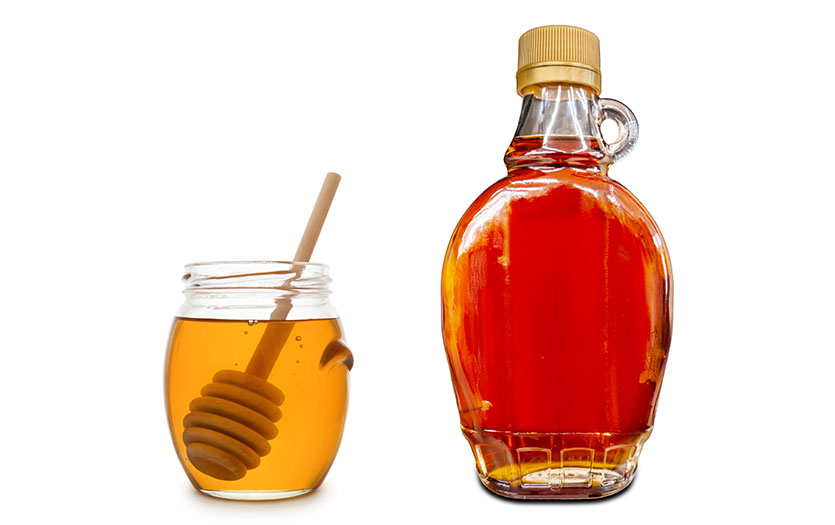
This post was written based on a presentation given by Alex Degitz, RDN, LD, Workplace Wellness, Parkview Employer Solutions.
According to a report by the American Heart Association, almost two in five adults in the United States have high cholesterol. Too much cholesterol can put you at risk for heart attack or stroke. To keep your cholesterol at a healthy level, it helps to understand what it does in our bodies and its relationship to the foods we eat.
What is cholesterol?
Cholesterol is a waxy substance found in our blood that is both produced by our liver and found in foods we eat. Cholesterol is needed for our bodies to make vitamin D and certain hormones, to build cell walls, and aid in the digestion of fat.
There are two main sources of cholesterol for our body: blood cholesterol and dietary cholesterol. The liver produces blood cholesterol, which can make about 1,000mg a day. Dietary cholesterol is found in animal products we eat such as red meat and whole-fat dairy.
Types of cholesterol
Cholesterol is carried through our blood streams around our bodies on proteins called lipoproteins. There are two types of lipoproteins:
- Low-density lipoproteins (LDLs) carry cholesterol around the body, but can build up in our arteries.
- High-density lipoproteins (HDLs) carry cholesterol back to the liver to be removed from the body.
LDL cholesterol is often called “bad” cholesterol because high levels can increase our chance of heart disease and stroke, as it can build up in our artery walls. This buildup is called plaque. HDL is known as “good” cholesterol because increased levels can help decrease our risk for heart disease and stroke, as it helps to flush excess cholesterol from the body.
What are the risks of having high cholesterol?
Too much cholesterol in our bodies can build up cholesterol deposits inside our blood vessel walls. This buildup is called plaque. Having plaque in our arteries can lead to medical events such as:
- Heart attack and coronary artery disease – This is caused by atherosclerosis, or the hardening of arteries from plaque, in the coronary arteries.
- Stroke and cerebral vascular diseases – Caused by atherosclerosis in the blood vessels that supply the brain.
- Embolism – This is when a buildup of plaque ruptures and a blood clot develops, blocking an already narrow artery. Then a fragment of the blood clot (embolus) breaks off and travels through the blood where it can become lodged elsewhere.
What affects cholesterol levels?
There isn’t a single factor that leads to high cholesterol levels. It’s often a combination of several factors including:
How to lower “bad” cholesterol
To lower your levels of LDL, the “bad” cholesterol that can cause plaque buildup in your bloodstream, there are several steps you can take, including:
- Limit dietary cholesterol intake to less than 300mg per day
- Eliminate trans fats and limit saturated fat to less than 10% of daily calories
- Aim for a total fat intake of less than 30% of daily calories
- Increase fiber intake
- Maintain/work toward a healthy weight
- Increase physical activity
- Quit smoking or tobacco use
- Take medication as prescribed
Eating well: lowering saturated and trans fats
One of the ways to reduce your “bad” cholesterol is to eat less foods containing trans and saturated fat.
Saturated fats increase both your total cholesterol and LDL cholesterol levels. These fats are typically solid at room temperature and are found in various foods including beef, lamb, pork, poultry with skin, cream, butter, cheese, ice cream, whole milk, coconut oil and palm oil.
Trans fats are fats that have been artificially processed to make liquid oils more solid. On a food label they might be called, “partially hydrogenated oils.” Trans fats also naturally occur in very small amounts in meat and dairy products. However, you’ll most often find them in convenience foods with added fats, baked goods, lards, shortening, margarine and fast foods. Trans fats not only increase your total and LDL cholesterol levels, but also decrease the “good” HDL cholesterol in your body.
Eating well: increase fiber
Eating enough fiber can have a host of health benefits for your body, including lowering cholesterol. There are two main types of fiber, insoluble and soluble, and it’s best to get a variety of both from the foods you eat
Insoluble fiber absorbs water as it travels through your digestive system and helps prevent constipation. Drinking water with insoluble fiber consumption is key, though, because if you don’t have enough water in your body, stools can be hard and difficult to pass. Insoluble fiber is found in whole wheat flour, wheat bran, many vegetables and nuts.
Soluble fiber dissolves in water to form a gel. This gel binds to LDL cholesterol and removes it from the body. Soluble fiber is found in apples, carrots, peas, citrus fruits, oats, barley and psyllium.
Here are a few helpful examples of ways you can increase fiber in your diet:
- Eat a high fiber breakfast. This could contain high fiber breakfast cereal or granola, fruit or fruit smoothies.
- Switch to whole grains. Look for whole grain bread with more than 2g fiber per serving. Add brown or wild rice and whole wheat pasta to your meal rotation.
- Fortify your baked goods. Add whole wheat flour instead of all-purpose; add shelled hemp seeds, wheat bran, flaxseed or chia seeds.
- Mix it up. Add fresh or frozen veggies and a variety of beans to soups, sauces or salads.
- Try produce. Eat fruits and/or veggies at every meal.
- Make snacks count. High fiber snacks include dried, fresh or frozen fruits and veggies, popcorn, whole wheat crackers, nuts and seeds, and trail mix.
How to increase “good” cholesterol
There are several steps you can take to increase your HDL or “good” cholesterol, including:
- Maintain a healthy weight
- Decrease your trans fat intake
- Increase your monounsaturated fatty acid (MUFA) and polyunsaturated fatty acid (PUFA) intake
- Decrease or quit smoking
- Engage in regular physical activity
One cholesterol-healthy food swap you can make is to replace saturated or trans fats with monounsaturated or polyunsaturated fats. These are fats that are liquid at room temperature. It’s recommended that at least 15-20% of our daily calories from fat come from unsaturated fats.
Monounsaturated fats include omega-9 fatty acids and are found in foods like olive, canola, peanut, sunflower and safflower oils; avocados; peanut butter; a variety of nuts; and in lesser amounts in chicken, pork and beef.
Polyunsaturated fats contain omega-3 and omega-6 fatty acids and are also found in sunflower, corn, soybean, and cottonseed oils; walnuts; pine nuts; flaxseed, sesame, sunflower and pumpkin seeds; and fatty fish like salmon, herring, sardines and tuna.
Lower cholesterol with exercise
Increasing your physical activity is a great way to lower your bad cholesterol and it has a host of other health benefits as well as many other health benefits.
The Physical Guidelines for Americans recommends that adults get 150-300 minutes of physical activity every week, with two days of muscle strengthening activities. Physical activity is anything that gets your body moving! This could include brisk walking, water aerobics, riding a bike, pushing the lawn mower, running, swimming laps or playing group sports.
How to get started exercising:
- Look for ways to reduce time sitting.
- Set aside specific time to make physical activity part of your routine.
- Start with activities or locations you enjoy.
- Find a partner to keep you accountable.
- Start slowly and work up to more challenging activities.
How smoking affects cholesterol
Smoking is known to lead to further narrowing of arteries and increaseing the buildup of plaque. It can also lead to a decrease ins HDL "good" cholesterol and an increase in LDL "bad" cholesterol as well as blood clots and high blood pressure. We strongly recommend reducing or quitting smoking completely for better cholesterol health.
If you need help quitting, explore Parkview's Smoking Cessation options or call 1-800-QUIT-NOW for resources and support to help you quit smoking or using other tobacco products.
Customizable wellness program for area businesses and organizations
Parkview Employer Solutions partners with area businesses, delivering innovative services to improve the health and well-being of employees. Workplace Wellness provides resources for local businesses to create a healthier workforce, including health risk assessments, wellness coaching, health improvement programs, wellness screenings and more. Contact Parkview Employer Solutions and develop a wellness program that benefits your company, your employees and your community.



